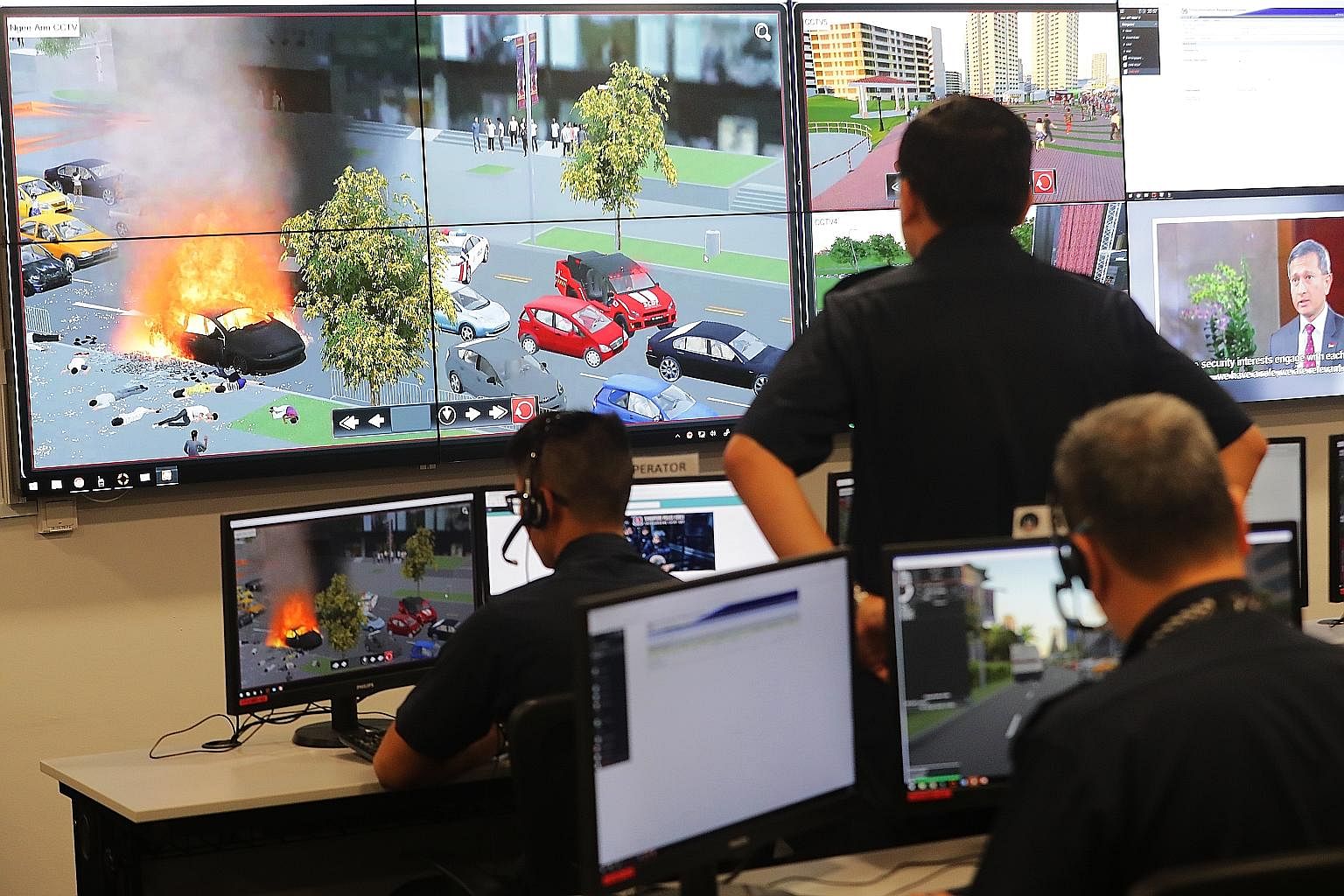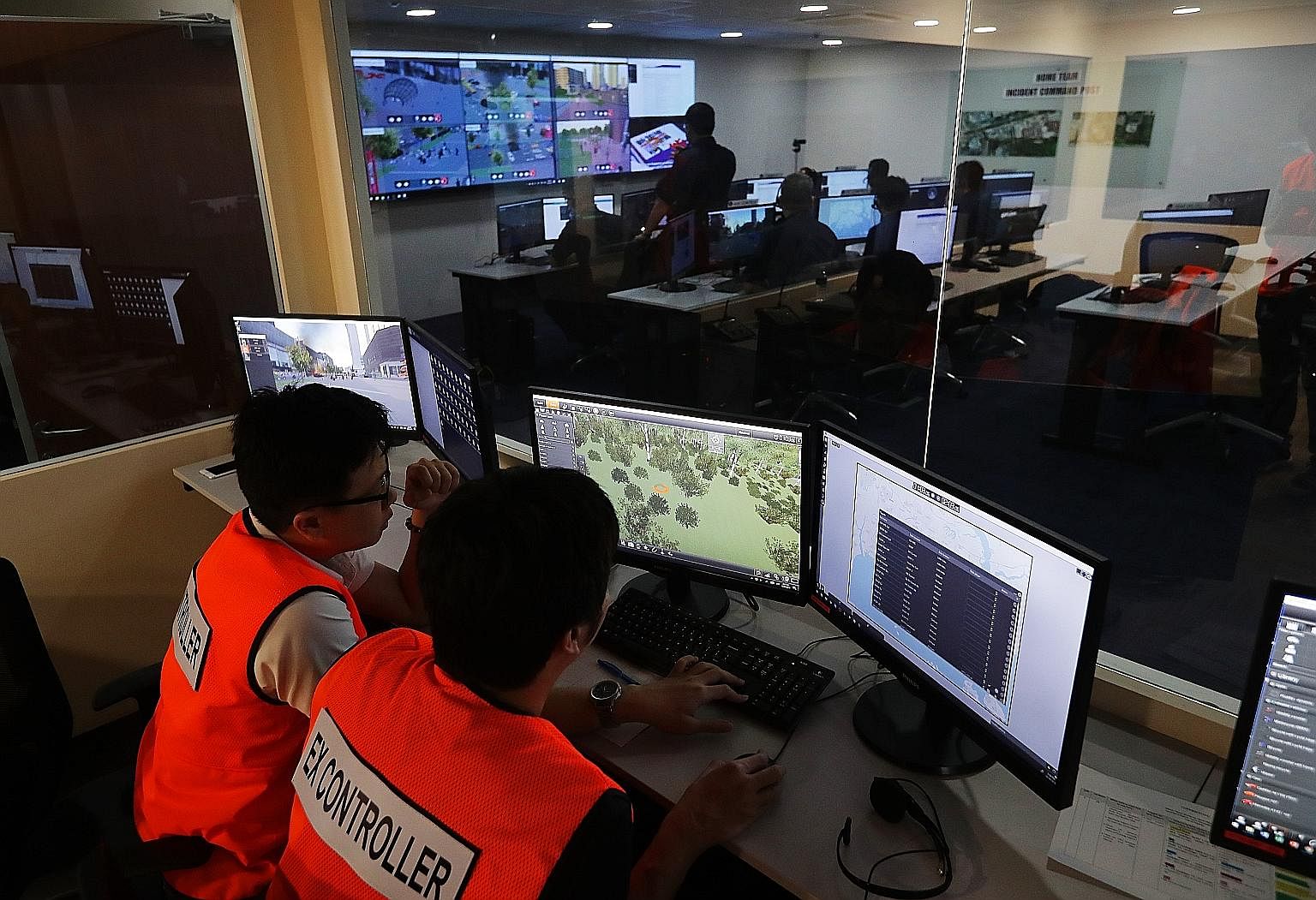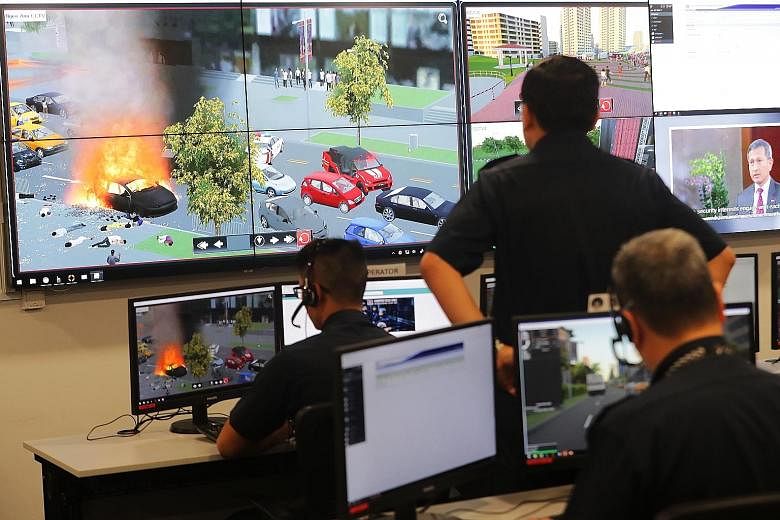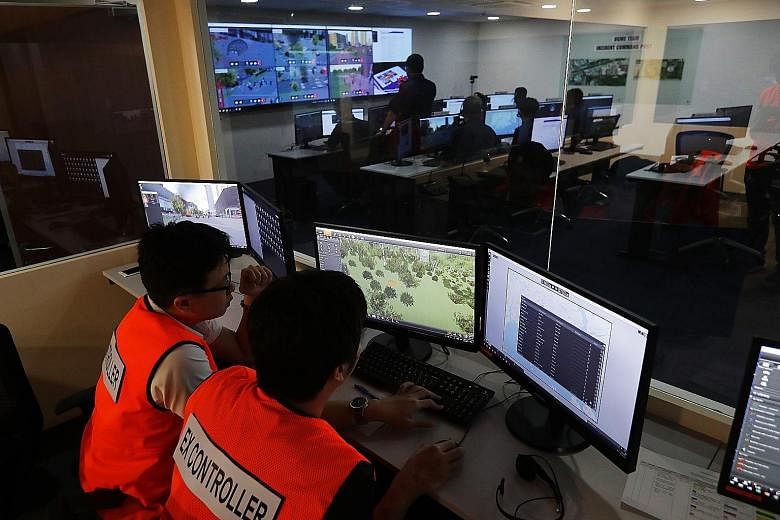Imagine a vehicle bomb explosion, a chemical attack and a riot taking place at the same time in different parts of Singapore.
How will the different Home Team departments react?
Since January, the Home Team has been conducting exercises involving its various departments, including the Singapore Police Force and Singapore Civil Defence Force, using a new simulation system.
Looking like a virtual reality game, but on a much larger scale, commanders in different rooms watch scenes unfold on large screens as they shout instructions on their headsets. For example, in a riot situation, as commanders give their orders, 3D images show officers on the ground confronting rioters on actual streets in Singapore.
Developed by the Home Team Academy, and customised based on technology by Dutch company XVR Simulation, the makers strove for realism in simulating emergency and crisis scenarios. Four areas in Singapore - Bishan, Orchard Road, Marina Bay Sands and Little India - have been mapped out, right down to the individual buildings.
The system, in development since last year, is housed at the new Home Team Simulation Centre in Choa Chu Kang. It was opened yesterday by Home Affairs and Law Minister K. Shanmugam.
Speaking at the launch, Mr Shanmugam said the system allows for joint operations training between Home Team departments.

He said: "We will need to strengthen Home Team integration, based on common values, a shared mission and the academy has a key role to play in that."
Here is how the system works: Commanders are housed in different rooms, each with a specific role.
There is a front-line post; forward-command posts near the different incident sites; and a main, more removed, command post located at headquarters. They are referred to collectively as the mock command centre.
In a separate simulation control room, officers in charge of the training introduce rapid scenario changes and live 'injects', meaning disruptions such as the appearance of a violent protester. This is to generate unpredictability. There is no limit to the number of injects that can be added to an exercise.
The commanders have to communicate effectively from their various posts, while under pressure, so that there is a cohesive chain of command for officers on the ground to act. The scenarios then evolve based on decisions made by the different commanders.
The system allows up to 20 commanders from different departments to be trained in joint operations. A simulation exercise can take up to a whole day, depending on the complexities.
Realistic scenarios
After the exercise, commanders and trainers can review the performance with the system's detailed playback function, which can highlight critical decision-making points for commanders.
Staff Sergeant Siti Badariah of Tanglin Police Division, 29, who trained under the system in preparation for a deployment, said: "It's as close to what we are going to experience on the ground.

"In real life, you won't get a situation where just one thing is happening, especially if the area is big. The system gives us that option to try injects simultaneously."
Deputy Superintendent Kenny Yeo, 44, who has been in service for 24 years, contributed his extensive police front-line experience to the development of the system, which he said is useful in creating the pressures a commander can face on the ground.
"As soon as he has decided how to deal with the first inject, we can prepare to release the second. We train a commander to multitask... how he can maintain an overview when two things are happening at the same time," added DSP Yeo.
Previously, large-scale training exercises involved significant logistics and manpower resources.
The system's project manager, Ms See Pei Jun, said the increased training frequency afforded by the system allows multiple commanders to be trained without tiring ground troops, unlike in a real-life exercise.
Other countries have used similar simulation systems to train their officers, including the United Kingdom, the Netherlands and South Korea.


